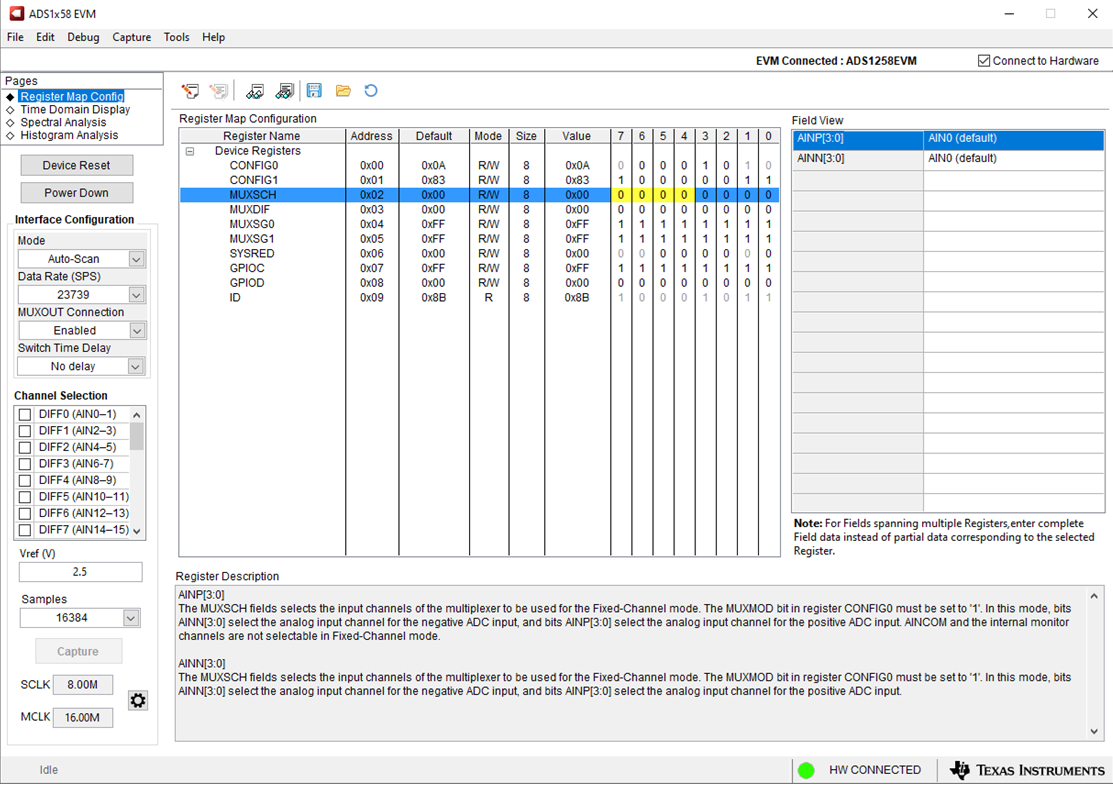SBAU126E may 2007 – june 2023 ADS1158 , ADS1258
7.2 EVM GUI Global Settings for ADC Control
Figure 7-3 shows that the EVM global controls are located on the left side of the GUI. These controls include the sampling mode, data rate, MUXOUT connection, switch time delay, channel selection, number of samples, and others. The Pages control in the upper-left corner allows access to the other pages in the GUI. Figure 7-3 also shows the available ADC register settings. The registers can be used to configure the ADC data rate, channel sequencer, or integrated features. Change the register settings by clicking on each bit, typing a value directly into the Value column, or by selecting from the drop-down menus in the Field View control.
 Figure 7-3 ADS1258EVM GUI Global Settings
for ADC Control Page
Figure 7-3 ADS1258EVM GUI Global Settings
for ADC Control Page